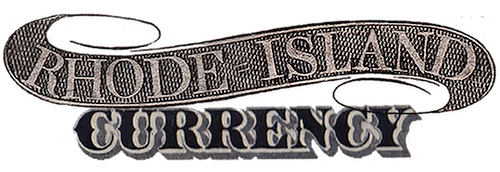Commercial College Bank, East Greenwich
The site of the Providence Conference Seminary, depicted on the banknotes below, was home to a number of educational institutions over its 160-year span. It began as the Kent Academy in 1802, on a prominent hill in East Greenwich (now known as the Hill District). In 1841, it was purchased by the Providence Methodist Conference and turned into a school that offered classes on subjects ranging from moral science and music to penmanship and commercial law. One of its specialties was training educators, and it is estimated that at one point in the mid-19th century, 75% of the teachers in Rhode Island had graduated from the school. After some financial difficulties, management of the Providence Conference Seminary was taken over by Boston University (from 1873 to 1884), which spent money on new structures for the 5-acre campus. The school was renamed the East Greenwich Academy (later just Greenwich Academy) at about this time.
In 1880, a 14-week enrollment at the school cost $69.50, not including books and room and board. For an extra $30, a student could take the commercial class, which included, “Double and Single Entry Bookkeeping, Penmanship, Banking, Mercantile and Manufacturing Accounting, Telegraphy, Survey. &c., together with common English branches during the course.”
The pieces of currency depicted here were used in such business classes. C.M. Alvord, the signer of many of these banknotes, was a professor at the school and Principal of the Commercial Department, in charge of penmanship, commercial law and bookkeeping.
On the $1, $5 and $20 bills, the central vignette is of the Academy Building. On the $10, $100 and $1000, this portrait includes the Principal’s Residence with its cupola. The academy closed in 1943 and the land was later purchased by the town of East Greenwich. The town used the Academy Building as a high school for a number of years before it was torn down, along with many other campus structures, in the 1960s. The school was located on Pierce Street.
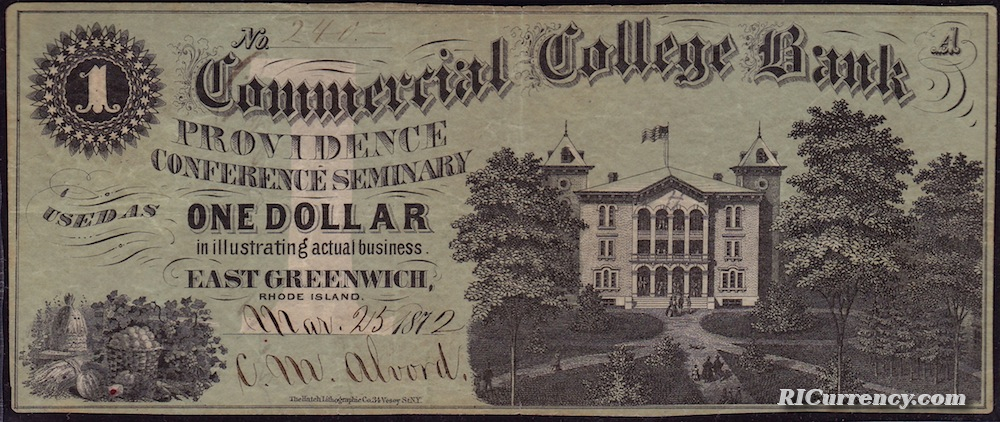


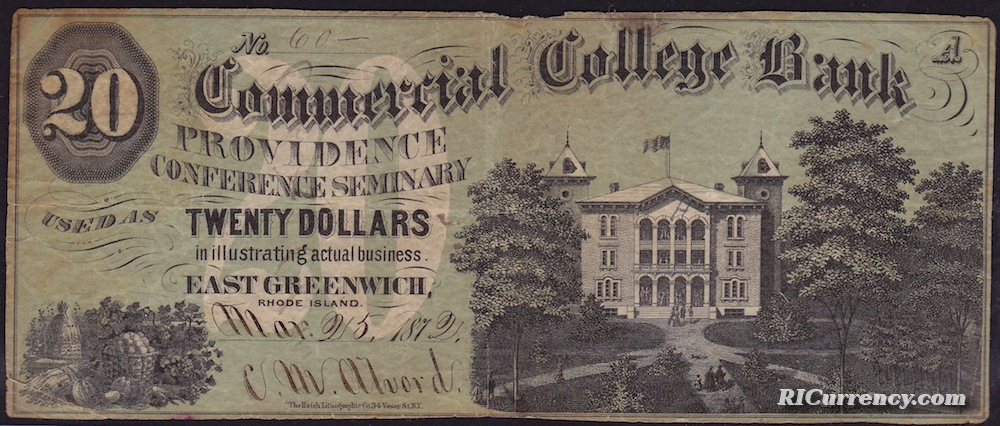


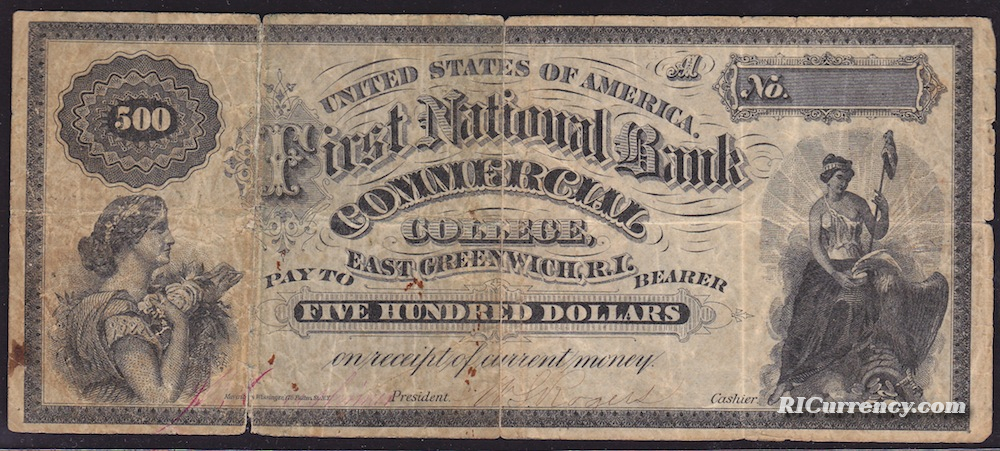
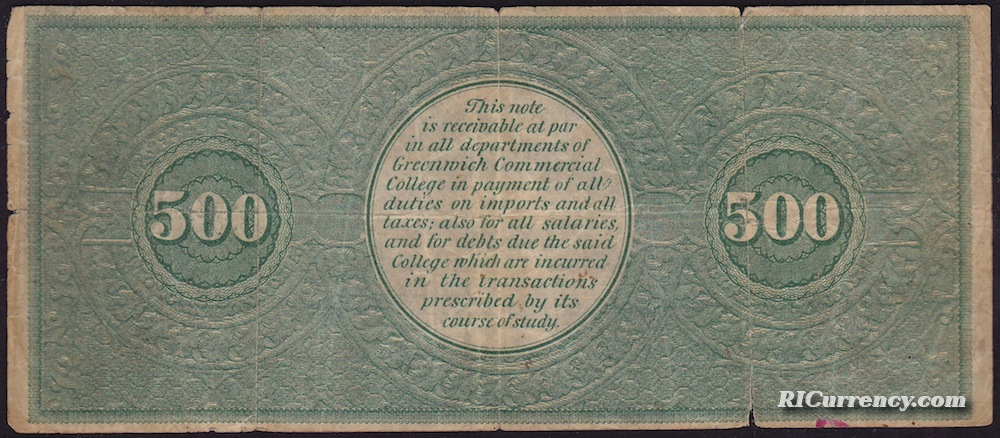
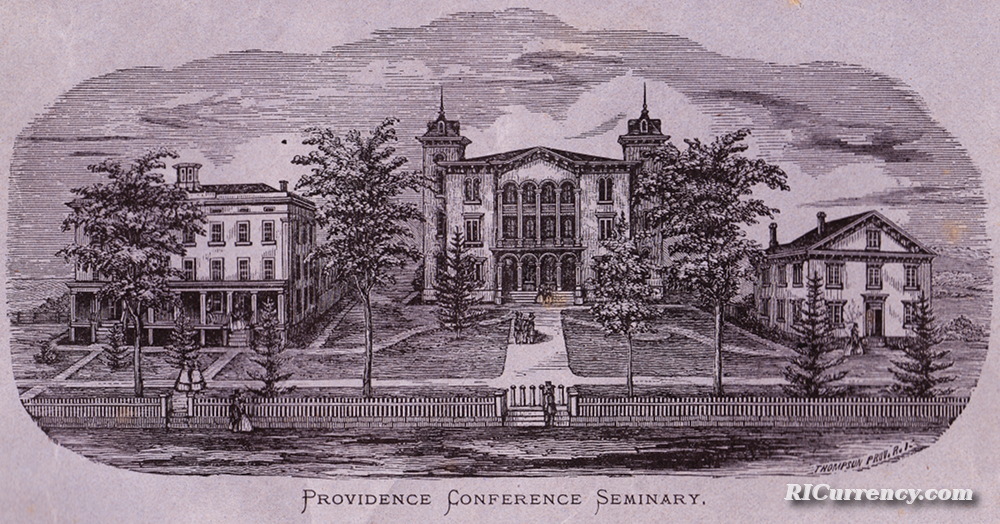
Engraving from the 1867-8 catalogue of the Providence Conference Seminary.
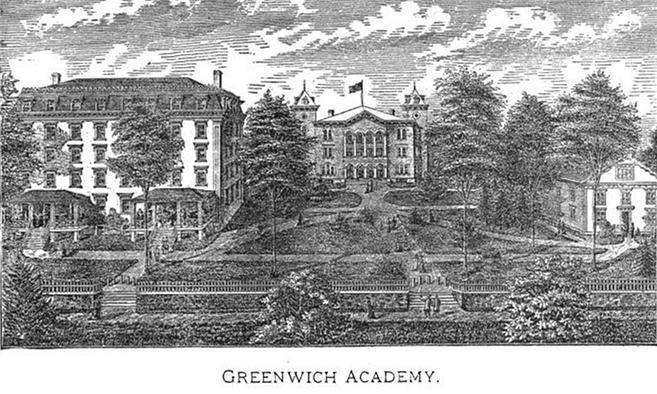
An 1877 engraving of the school, then known as the Greenwich Academy.
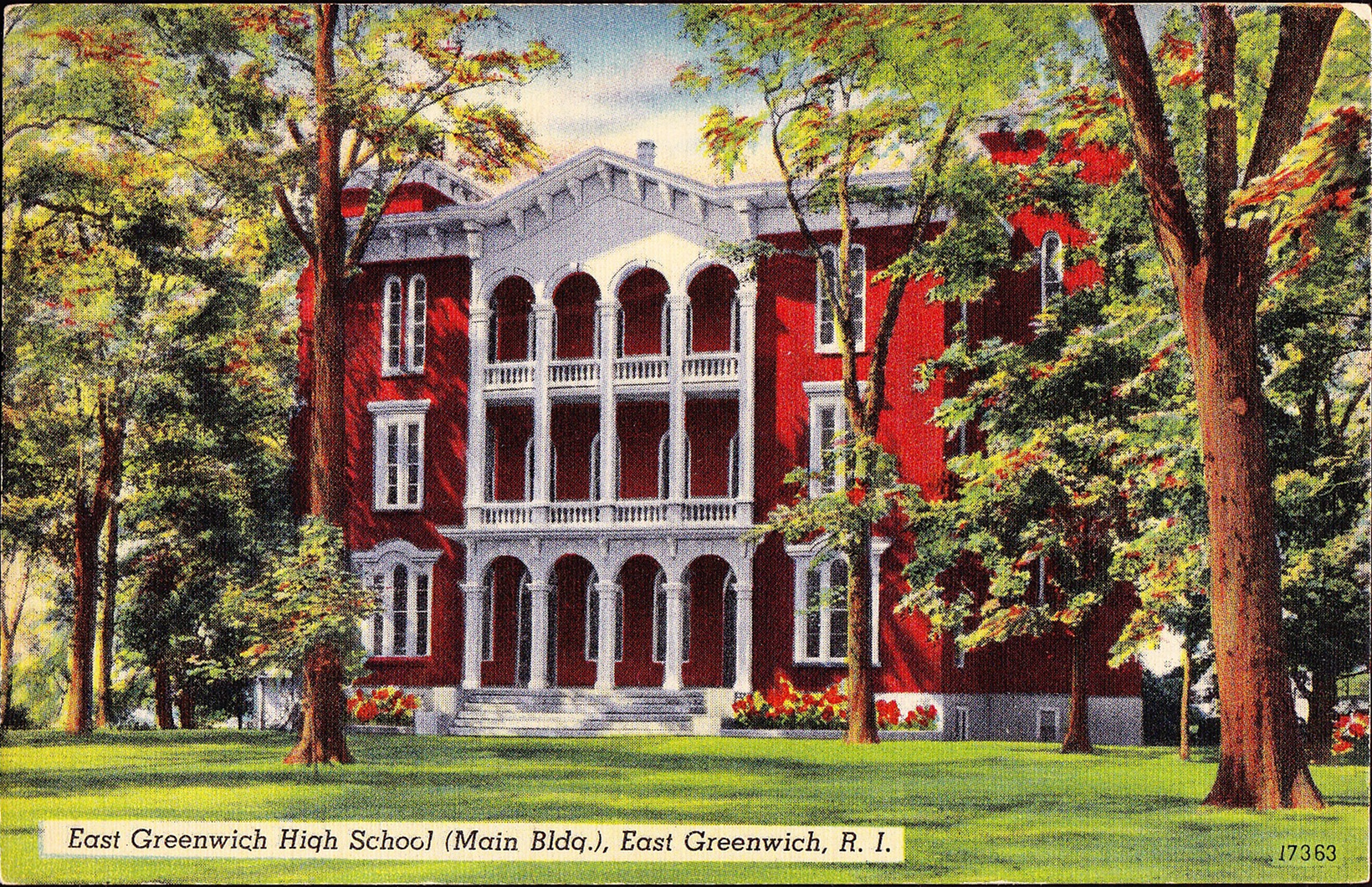
A circa 1955 postcard depicts the Providence Conference Seminary in its last incarnation as the East Greenwich High School.
